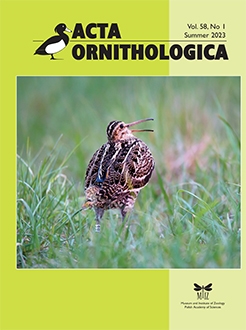In bird species with a lek mating system, male mating success is usually correlated with time spent at the lek, suggesting strong selection for lek attendance. We studied the lekking of Great Snipe Gallinago media males over 5 breeding seasons in Poland and found that, in apparent contradiction, 75% of males changed leks, often several times, within a single breeding season. GPS-tagged individuals tracked for an average of 31 days visited up to 9 different leks, often visiting 2–3 leks in quick succession within a few hours. Transitions between leks were entirely nocturnal, peaking before midnight. The majority of males that changed leks moved to sites within 50 km of the original lek, but 10% of males dispersed more than 100 km. Lek-switching males typically made several transitions between leks during the breeding season (median = 4), with most mobile birds changing display sites more than 20 times. Lek-switching probabilities showed seasonal variation, with no males changing leks early in the breeding season and frequent changes thereafter. The daily probability of lek change showed large inter-individual variation, allowing two groups of males to be distinguished, those who never or rarely changed leks (mean daily probability of lek change 0.02) and those who frequently changed leks (mean daily probability of lek change 0.23). This type of heterogeneity in male lekking behaviour is consistent with the hot-shot scenario of lek evolution. Here, lekking males with low mating chances should benefit from lek-switching — in contrast to top-ranking males — because changing display site may allow them to find leks with higher mating chances. Furthermore, regardless of its immediate success or failure, lek-switching can be seen as a form of prospecting behaviour that will pay off in future breeding seasons. Consistent with this, many of our lek-switching males moved in a way that suggests informed dispersal. The prevalence of intraseasonal lek switching in different Great Snipe populations across Europe should be assessed using the modern tracking devices, as this behaviour is likely to be much more widespread than reported in many previous studies.
How to translate text using browser tools
10 November 2023
Intra-Seasonal Lek Changes of Great Snipe Gallinago media Males in the Northeast of Poland
Michał Korniluk,
Przemysław Chylarecki
ACCESS THE FULL ARTICLE

Acta Ornithologica
Vol. 58 • No. 1
Summer 2023
Vol. 58 • No. 1
Summer 2023
dispersal
Great Snipe
hotshot model
individual quality
lekking
lek-switching
prospecting





